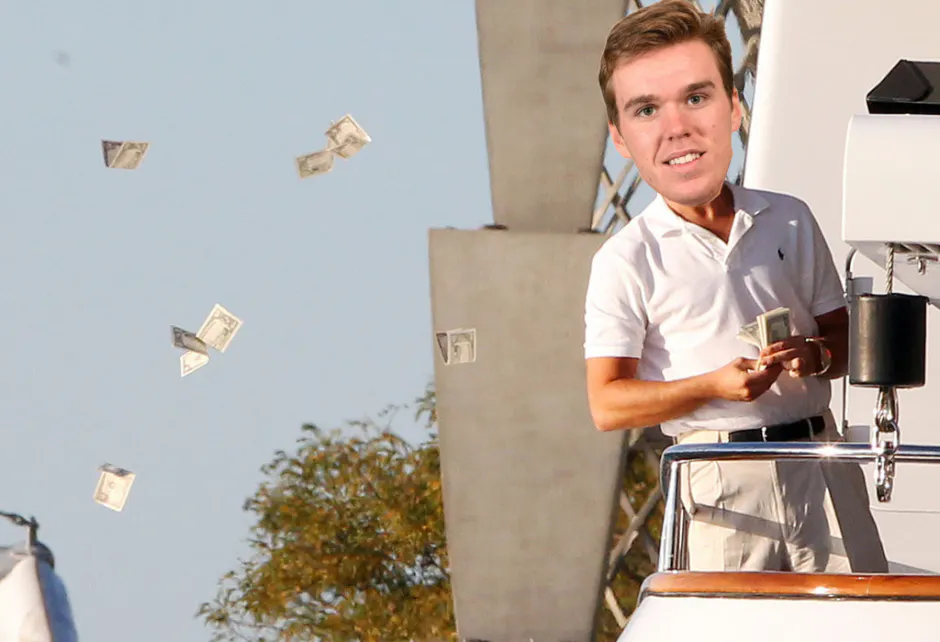A well-documented part of the COVID-19 pandemic from an NHL perspective is how the league is losing a lot of money and what long-term ramifications it’ll have.
If the NHL isn’t able to play another game for the 2019-20 regular season or playoffs, the league will see a shortfall in revenue in the one-billion-dollar range. At the end of the day, it’ll be the players compensating for a lot of the lost revenue this year. They’ve deferred their final paycheque to May 15 to give more time to determine how much they’ll be formfitting in order to reach the CBA-mandated 50/50 split on hockey-related-revenue.
In a world in which many are losing their jobs due to a global pandemic, it’s difficult to care too much about how much money millionaires are going to be giving back to their billionaire employers to compensate for a revenue shortfall. But from a fan’s perspective, there will still be interesting long-term implications that are worth paying attention to.
A key one, of course, is the salary cap. As I’ve discussed before, the salary cap number is drawn from a projection of hockey-related-revenue made the June before a given season. More than likely, we’ll see the NHL’s current cap number of $81.5 million remain stagnant for the next few years in order to compensate for the money lost this year.
This will obviously make life difficult for teams because many having been signing players and making long-term plans with the expectation that the cap would rise year by year, such as it has pretty much every season since its implementation after the 2004-05 lockout.
The obvious solution being thrown out there is compliance buyouts, which will give general managers a get-out-of-jail-free card to essentially delete contracts from their salary cap situation. This was the solution back when the first half of the 2012-13 was wiped due to a lockout and teams had to scramble to get under a lower-than-expected salary cap.
But is this really a long-term solution, or just a quick band-aid fix? Over at KO Sports, an NHL player agency that represents dozens of current players including Mike Smith and Jujhar Khaira, Kurt Overhardt takes a deep dive into the NHL’s current financial landscape and offers a creative solution to help teams navigate this situation.
It’s the Exception Player Rule, in which teams would be permitted to select one contract to not count against the salary cap while paying their salary to a luxury tax that gets spread around the league.
Under this new system, each Club would be allowed to designate one Exception Player whose compensation would be excluded from the team’s salary cap considerations as well as the players’ share of the revenue split. The benefits of this system extend far past the Exception Player as an individual as there would now be more money in the pool available for his teammates.Competition among the League’s 31 owners is fierce with each Club constantly looking for any angle to gain a competitive advantage. This system also represents a win for NHL owners as they are provided a strategic mechanism in which they can fight for the League’s top players. Exception Players could be obtained via the Draft, trade or free agency, thus heightening the competition amongst owners for the League’s super elite. Players would eligible for the designation upon the expiration of their Entry-Level Contract.This would be an opt-in system and choosing to use the designation would be 100% at the discretion of each Club. There would be no minimum payment threshold to qualify for the designation and only allowing one Exception Player per team would avoid bias towards the richer organizations. The broad diversity of NHL markets and players’ idiosyncrasies would enable each Club to attract and retain its own super elite player over time.Even in the event that a small-market team pushes back against the Exception Player rule, the League could require that any Club that designates and signs an Exception Player pay a luxury tax which would then be distributed to the Clubs that have not made such a designation.
In the post, Overhardt takes a look at how the players have gotten the short end of the stick when it comes to escrow and revenue sharing over the years and how it’ll get worse for them in the wake of the COVID-19 pandemic. It’s important to note, of course, that Overhardt is a player agent and his livelihood is directly tied to making players the most cash possible, so his stance is going inherently be aggressively pro-player.
But, to be honest, I can’t disagree with him here. He points out, among other things, that the Vegas Golden Knights’ whopping $500 Million expansion fee from a few years ago wasn’t classified as hockey-related-revenue so the owners pocketed the entire thing while the players saw none of the split. He also mentions how top NHL player salaries were on par with those of MLB, NBA, and NFL salaries in 2000 and now they aren’t even close.
Again, this isn’t something I’m going to lose sleep over myself, but it’s an interesting point nonetheless.
What I’m concerned about is the Exception Player Rule and what possibilities it would open up for teams, especially those who have owners with deep pockets. Imagine the Oilers were able to grant Connor McDavid as their exempt player and his $12.5 million cap hit was wiped from the books. They would then have the cap room to go and make a massive free-agent splash, perhaps adding Taylor Hall or Alex Pietrangelo to the fold.
It’s certainly a very, very player-friendly proposal, one that I’m sure the owners would have beef with because it represents a move away from the hard cap system. But if there was ever a time to spitball ideas for how the NHL could change, it’s right now in the face of armageddon.

